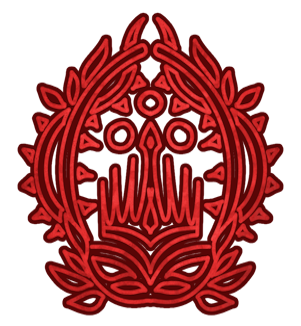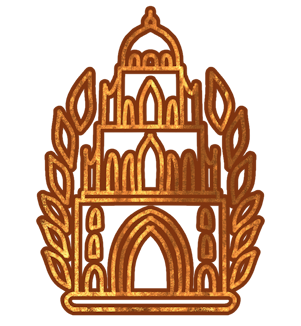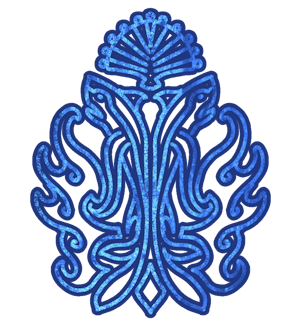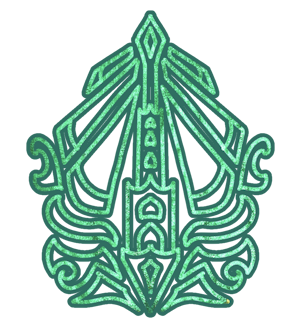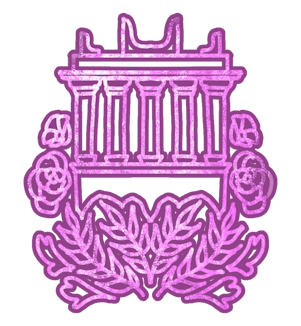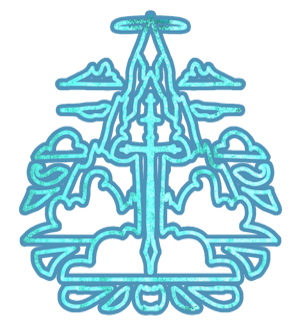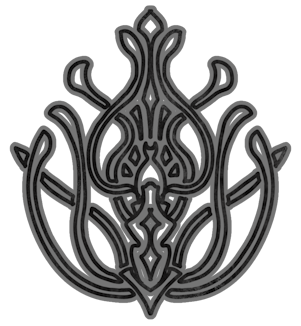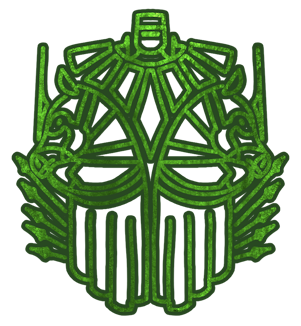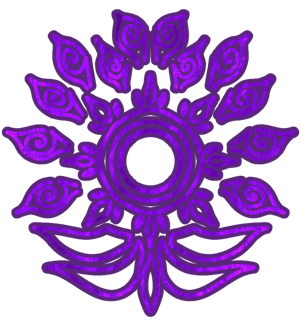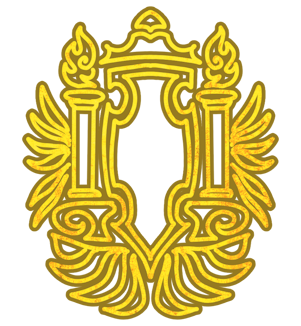More actions
| Teled | |
|---|---|
 | |
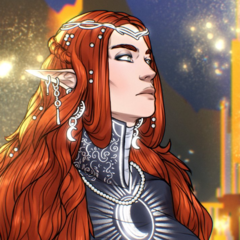 | |
| Languages | Altalar |
| Religion | Estelley (and more) |
Teled, sometimes called Teledden or just Elves, are the most commonly found Elves, and inheritors of an ancient legacy of the Allorn Empire, an Elven Empire that lasted for thousands of years. While their Empire eventually fell, the Teled continued to thrive in politics, art, trade, and magic and continued to be the second most populous people across the world of Aloria, only out-classed by the much shorter-lived Ailor. Teled offer an experience in both the traditional fantasy Elf, but also several variations with unique design alterations.
Physical Characteristics
Teled vary from culture to culture, but can generally be understood to look like traditional Elves with only the Llasada Culture appearing more mer-folk-like with tails, fins, and scales. They have a wide variety of different long/pointed ear shapes, skin tones, and eye colors of practically any variation, except the Solvaan who are always blue-tinted in skin tone. When Teled mix with other heritages, their traits are often dominant, resulting in the typical Half-Elven ear-shapes, but generally they are not dissimilar from the other people of Aloria. Most Teled range from the high five feet, to the high range of six feet, with rare cases just barely hitting seven feet. Of the cultures, the Llasada and Pelyon tend to be the largest, while the Minoor and Bel Hammon tend to be shorter. Most Teled live easily to 400 years old, though some have been known to reach 1000 years old with the assistance of Magic. Generally, we recommend that players keep their characters younger than 150 years old.
Cultures
The Teled Elves have over the millennia divided into Cultures much like the Ailor have, with customs and traditions that transcend nationhood. While once most if not all resided within the (old) Allorn Empire, these Cultures express different ways to play a traditional Elf. Below are depicted various Cultures of Teled, hover your cursor over the text to read more about them. You should choose one dominant culture for your Character.
|
Neo-Allorn, also known as Imperialist Elves, hail from nearly all states and nations that have Elves in them, but notably Val Allornavaal. They continue the pro-Magic and Imperial reclamation of the fallen Allorn Empire and re-establish the new Allorn Empire as a world power. Neo-Allorn are gracious, and poised but capable of deep insidious plotting and deceit. They seek conquest and glory for the Estelley Empresses. |
Amontaar, also known as Diplomatic Elves, hail from the city-state of Amontaar, a center of politics, commerce, and diplomacy. As a nexus between Empires, the people of Amontaar have always had to cultivate social networks and connections, a willingness to listen, and to pragmatically act and mediate to preserve their independence. Amontaar Teled frequently travel to Regalia to do political or economic business, a city like their own. |
|
Finul, also known as Maritime Elves, follow the example of Empress Finell, the patron of Bel Faiaal, who was a renowned sailor and passionate lover enjoying the good life. The Finul have abandoned the haughty and poised Allorn disposition in favor of wild, loud, and excitedly intimate or passionate expressions. The Finul can be found in any port, anywhere the sea touches, including Regalia, a great maritime focused Empire. |
Bel Hammon, also known as Scholar Elves, hail from the similarly named hermit-kingdom, a magic-focused state with power that secures itself through dubious means. The Bel Hammon are mistrusted by the wider world, even denounced as evil immoral warlocks and scientists who don't care for the value of life or morals in their pursuit for magical power. Their magical cabal even reaches Regalia, where they too experiment. |
|
Minoor, also called Communal Elves, hail from Minoor Leria, a land where they have rejected nationhood, empires, and wealth. The Minoor live by the needs and capabilities of its people, a rural paradise from which the locals preach a return to simplicity and cooperative philosophy, and to reject approaching modernity. Many of them proselytize their own ideology in faraway lands, hoping to convince others to abandon violence. |
Solvaan, also called Warden Elves, are descendants of colonists who traveled far east to Solleria, a land shrouded in monster-filled mists, where they eventually integrated into the Ailor Regalian Empire, and became a cornerstone of its political and military landscape. The Solvaan are hunters and mercenaries, protectors of the people, and those who rejected the Allorn Empire's isolation in favor of cooperation with other peoples. |
|
Llasada, also called Cutthroat elves, are feared across the high seas. They were once Finul but were inspired by Prince Larason to turn away from Estelley worship, and to the Deep Will, an oceanic-horror faith. The Llasada are nearly exclusively pirates, corsairs, and cutthroats, taking from the weak what they can get their hands on, with their might-makes-right philosophy. They have even given their body to the sea as merfolk. |
Pelyon, also called Knightly Elves, are strongly intermingled with the Ailor in the similarly named lands, a chivalric knighthood-obsessed people who worship the concept of might-makes-right and have long abandoned delicateness in favor of brutishness. Their people serve in large mercenary armies, baptized in warfare, while their coin is spent on personal luxuries. The majority serve Regalia in faith and war. |
|
Presenna, also called Priestly Elves, are the cornerstone of the Estelley faith and its clergy, their homeland housing the ecclesiastic colleges and academies where nearly all ordained priests of the faith are trained. Presenna is a land ravaged by centuries of warfare, corsairs, and invasions, the religious population holding strong faith, their defenseless nature giving rise to a reputation for enlightened pacifism. |
Lanlath, also called Avenger Elves, are Elves who fled into Sylvaris as Veilwalkers to escape the evils of the Allorn Empire, where they built their peaceful cities. Their ethics eventually changed, repulsed by the suffering world they left behind and feeling guilt, re-opening the gates of Lathan to act as the moral guidelight of the Elves, using their safe havens as a base from which to attack the Allorn Empire. |
Language and Naming
All Teled Elves use the Altalar language. Even though each of the Cultures has a slight variance in accent or dialect that is distinguishable enough to allow them to be told apart, they are all mutually understandable. Altalar is mostly a fantasy language that borrows verbiage from Spanish, but gives them fantasy flairs by softening consonants and extending vowels. Good examples would be "Adios, Gracias, and Hola", which would for example be changed to "Alïos, Ce'lias, and Äula", but there are no hard rules for this, and it is generally not recommended to translate whole sentences and only use this styling for individual words. Modern Spanish names are also suitable for translating into Altalar naming:
- Example of Male names: Ëasiel (Daniel), Lüsas (Lucas), Näul (Raul), Noveyn (Robert), Äuonshe (Jorge), Lavlo (Pablo), Mancel (Marcus), Sönsalo (Gonzalo), Na'ael (Rafael), A'losso (Alfonso).
- Example of Female names: Samila (Camilla), Isaveyl (Isabel), Sa'alia (Natalia), Siliana (Clara), Fisonia (Victoria), Savniella (Gabriella), Veani (Beatrix), Nassissa (Fransisca), Eyfa (Eva).
- Example of Unisex names: Sil (Gil), Aleycis (Alex), Ëasi (Dani), Eysmeynlea (Esmeralda), Äuimey (Jaime), Monshaa (Morgan), Qüiem (Quim), Feyno (Vero), Savia (Gabi), Cimme (Kim).
Furthermore, Elves who are born in Elven lands, tend to have more complex naming rules. They take a first name for example Noveyn, followed by a middle name Na'ael (for example being named after one's grandfather Na'ael), and finally a surname. This is then added to by the place where this Noveyn Na'ael Selven came from, being the City of Vashaäel by adding Bel- (meaning beautiful) in front of it, so Bel-Vashaäel. Finally, Elves distinguish their current Imperial loyalty at the end of their name as Elasis (Regalia), Alloneï (Allorn), or the name of the country in Elven as seen on the Geography page. So if this family was Regalia loyal, it would be in full: Noveyn Na'ael Selven Bel-Vashaäel Elasis, or just Noveyn Selven in short. If you need help with Elven naming, please make a Ticket on the Roleplay Discord so our more experienced linguists can help you.
Religions
- Estelley: Estelley is the faith of choice for the vast majority of the Teled Elves. Estelley is considered a religion made for and by Elves, and they continue to have very strong connections to all of the Gods regardless of politics.
- Draconism: A small minority of Draconism Teled Elves exist in deep isolation from the other Elves. Historically, most Draconist following Elves followed the Cold March, but a few pockets were unable to, or did not want to leave the Allorn Empire.
- Unionism: A large minority of Unionist Elves exist in Regalia. Large migrant populations of Solvaan and other cultures of Teled Elves have moved to Regalia over the past three centuries, and some even converted to the local faith which does have Elven representation.
- Minor Faiths, Evolism: are represented in small minority groups, largely as a holdover from the Cult days. That being said, the Faith of the Deep Ones is very popular and majority among the Llasada, and has some presence among the Finul.
- Khama, Fornoss: There are virtually no Teled Elves who worship these religions for a variety of cultural and religious reasons. It is not impossible to have worshipers of them, it is just unnecessarily playing on hard mode.
History
Elven history is vast because the Allorn Empire existed for nearly 15,000 years, and most of Teled Elven history is tied to the existence of the Allorn Empire. Below is a simplified timeline (that does not need to be memorized) and purely exists to give you a visual understanding of how the various Elven people relate to each other. If you are interested, their other pages are linked below the image, but not relevant to this page. Elven History is divided into large Eras, which are counted in the Ailor year counting because Elves count years in the Empress' number of years ruled, which is confusing.
The Fire Era
Little is known about the Fire Era, besides the fact that the Teled Elves lived in some form of pre-urbanized pre-medieval-ish society that was either on the boundaries of, or subservient to the Dewamenet Empire of the Asha people. The Presenna and Suvial cultures were also around, though it was believed that the Presenna was a separate branch of Elves who worshiped Leyon and had not yet joined the Estelley Faith. The Suvial were more advanced than the common Teled Elf and existed in some form of early Ganges-Kingdom civilizations level independent from all outside influences.
This era is marked by two major events, the Years of Fire which the Era is named after which describes the wars that Talea, Cemaan, and Sapphora waged on the other Elven Gods to force them all into the same pantheon under their rule. The second major event was the Dewamenet-Allorn War. The Years of Fire have no clear starting date because the Elves did not yet have a formal writing system back then, though it seemingly ended somewhere around 15500 BC, which is also when the Dewamenet-Allorn War started. This name is technically incorrect since the Allorn Empire was proclaimed after the war ended. The Asha maintain a very different historical narration about the War, that is utterly rejected by the Elves. When the War ended, the Empire was proclaimed, and the Calm Era started.
